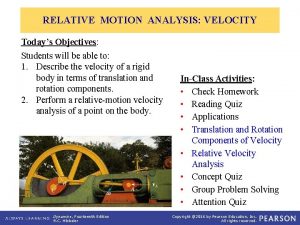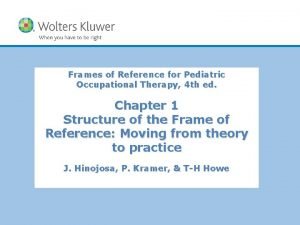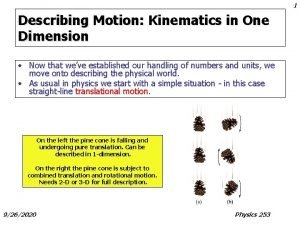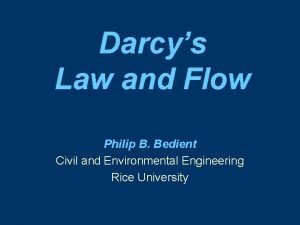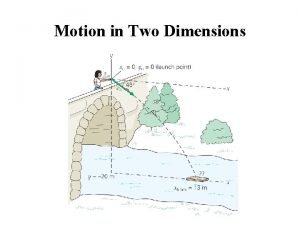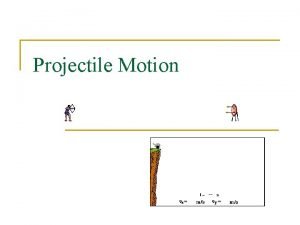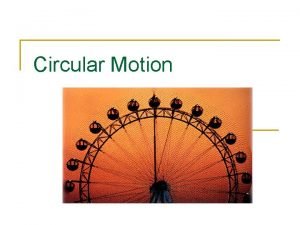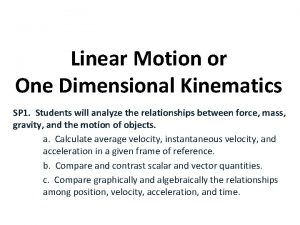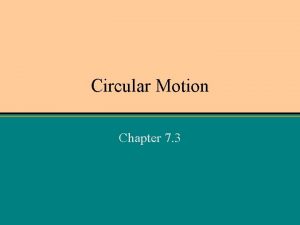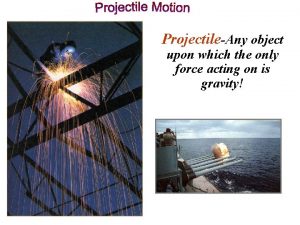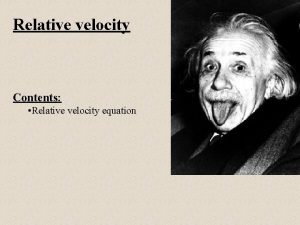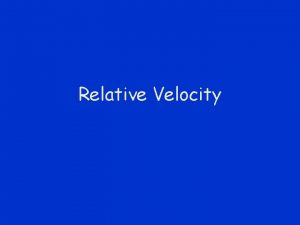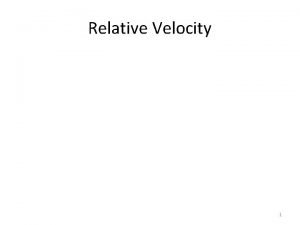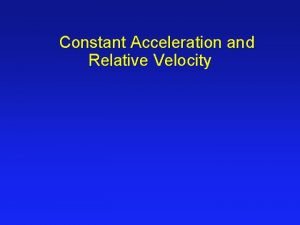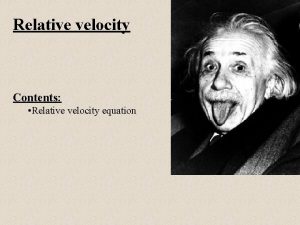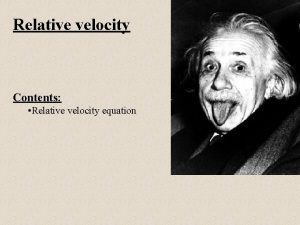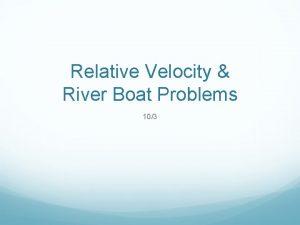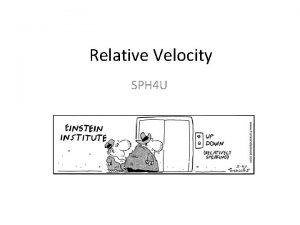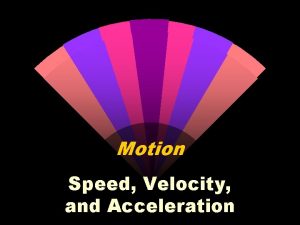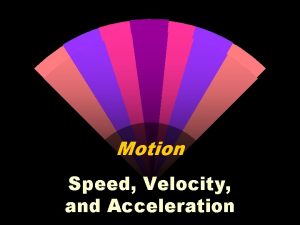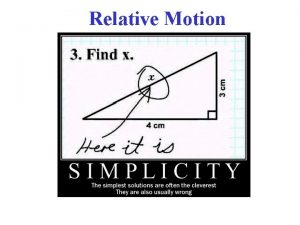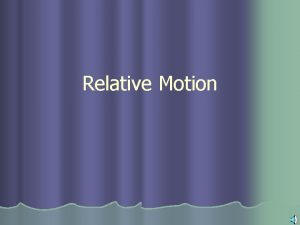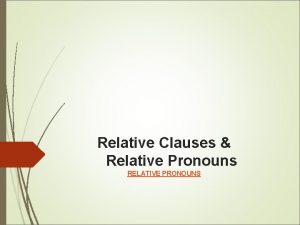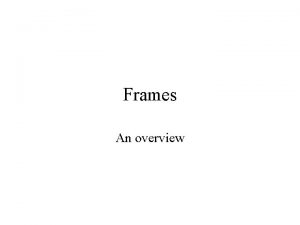Frames of Reference Relative Motion Relative Velocity Frames


















![Practice Answers 1. 3. 0 m/s [21° right of fwd] 2. 7. 2 x Practice Answers 1. 3. 0 m/s [21° right of fwd] 2. 7. 2 x](https://slidetodoc.com/presentation_image_h2/685d83c0700480b07da093626a7e80e1/image-19.jpg)
- Slides: 19

Frames of Reference • Relative Motion • Relative Velocity • Frames of Reference Equation • Waterway example • Airplane Example • Practice Questions

Relative Motion • When discussing the motion of objects, it is important to give a frame of reference. • If an object is moving, we need to ask … “relative to what? ”

Consider the following:

• Consider two friends chatting in the mall. – Jay is on the stairs and Sue is on a stationary escalator beside him. – The escalator begins to move downward at 0. 62 m/s. How fast does Sue 'move' in order to 'not move' relative to Jay? – If Jay begins to walk up the stairs at 0. 34 m/s, how fast does Sue have to move in order to keep up with him?

Motion is Relative • A person who is standing still is moving 1, 600 km/h relative to a frame of reference at the center of the Earth. • The center of Earth is moving relative to the Sun at 110, 000 km/h. • And the Sun is moving relative to the center of the galaxy at an incredible speed. • This is why cars moving in the opposite direction as you appear to be going really fast. It’s like you are still and they are going twice as fast as normal.

Relative Motion • To analyze relative velocity in more than one frame of reference, we use the symbol for relative velocity with two subscripts in capital letters. • The first subscript represents the object whose velocity is stated relative to the object represented by the second subscript. • In other words, the velocity of the first letter is being measured/observed from second letter (the frame of reference). • i. e. regarding the flight of a plane, means that the Plane (P) is flying 490 km/h [W] relative to the Earth (E)

Relative Motion • If we say that VPE represents the motion of the plane relative to the earth, then VPA is the plane relative to the air and VAE is the air relative to the Earth. • Therefore, the VPE can be calculated: • If the plane is moving at the same speed as the air then VPA = 0 and VPE = VAE

Check Your Understanding

Check Your Understanding • The air speed of a small plane is 215 km/h. The wind is blowing at 57 km/h from the west. Determine the velocity of the plane relative to the ground if the pilot keeps the plane aimed in the direction [34° E of N].

Check Your Understanding Solutions

Check Your Understanding Solutions

Check Your Understanding Solutions

Check Your Understanding Solutions

Check Your Understanding • The air speed of a small plane is 215 km/h. The wind is blowing at 57 km/h from the west. Determine the velocity of the plane relative to the ground if the pilot keeps the plane aimed in the direction [34° E of N].

Check Your Understanding Solutions

Check Your Understanding • A helicopter, flying where the average wind velocity is 38 km/h [25° N of E], needs to achieve a velocity of 91 km/h [17° W of N] relative to the ground to arrive at the destination on time. What is the necessary velocity relative to the air?

Check Your Understanding Solutions

Practice 1. A cruise ship is moving with a velocity of 2. 8 m/s [fwd] relative to the water. A group of tourists walks on the deck with a velocity of 1. 1 m/s relative to the deck. Determine their velocity relative to the water if they are walking toward the starboard. (the starboard is on the right side of the ship as you face the front. ) 2. The Bat Plane, travelling with a velocity relative to the air of 320 km/h [28° S of W], passes over Gotham. The wind velocity is 72 km/h [S]. Determine the displacement of the plane from Gotham 2. 0 h later.
![Practice Answers 1 3 0 ms 21 right of fwd 2 7 2 x Practice Answers 1. 3. 0 m/s [21° right of fwd] 2. 7. 2 x](https://slidetodoc.com/presentation_image_h2/685d83c0700480b07da093626a7e80e1/image-19.jpg)
Practice Answers 1. 3. 0 m/s [21° right of fwd] 2. 7. 2 x 102 km [W 38° S] from Gotham
 Relative motion analysis using rotating axes
Relative motion analysis using rotating axes Pediatric occupational therapy frames of reference
Pediatric occupational therapy frames of reference Darcy law units
Darcy law units Relation between linear velocity and angular velocity
Relation between linear velocity and angular velocity Initial velocity and final velocity formula
Initial velocity and final velocity formula Is v final velocity
Is v final velocity Deceleration formula
Deceleration formula Instantaneous velocity vs average velocity
Instantaneous velocity vs average velocity Darcy s law
Darcy s law Angular velocity to tangential velocity
Angular velocity to tangential velocity Angular acceleration formula
Angular acceleration formula Section 2 velocity and momentum
Section 2 velocity and momentum Projectile motion displacement formula
Projectile motion displacement formula Projectile motion diagram
Projectile motion diagram Maximum velocity in vertical circular motion
Maximum velocity in vertical circular motion Ticker tape diagram
Ticker tape diagram Instantaneous velocity circular motion
Instantaneous velocity circular motion A projectile is an object upon which the only force is
A projectile is an object upon which the only force is Reference node and non reference node
Reference node and non reference node Reference node and non reference node
Reference node and non reference node
